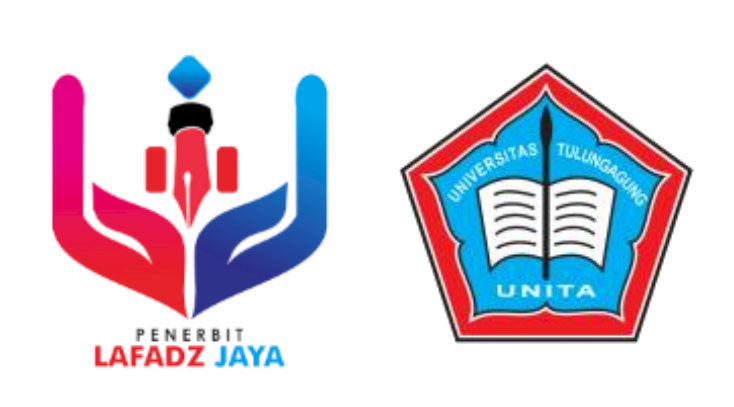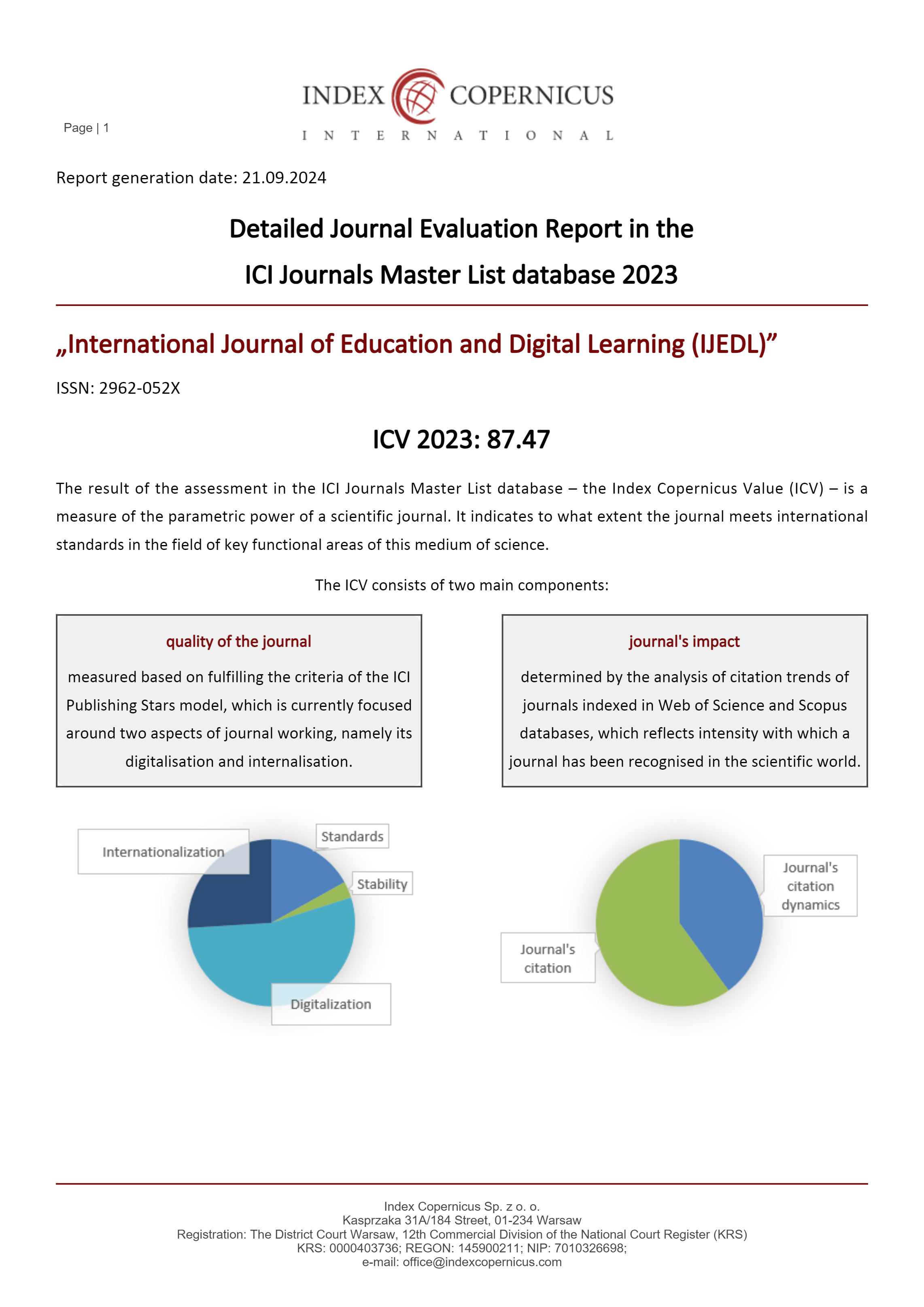Several Digital Literatures for Children
DOI:
https://doi.org/10.47353/ijedl.v1i4.20Keywords:
children, literature, digital, educationAbstract
Children's literature is literary writing aimed at early childhood where today children's literature has experienced many developments from time to time both in terms of form and writing. Children's literature experiences many developments over time both in various media, such as digital and non-digital. This article focuses on digital literary media. Digital literacy is the capability to utilize technology and information from digital devices successfully and efficiently in a variety of contexts, including education, employment, and daily life, especially in the field of children's literature, education, form and genre will continue to be considered, so that children who read get good information. The purpose of this article is to explore various digital media of children's literature. This research used qualitative research method through library research. Data collection in this study was carried out by exploring several journals, books and documents (both print and electronic) and other sources of data and/or information related to research. The result of the study indicate that there are several digital media literature, namely CD-Roms, video games and picture book apps that have advantages such as entertaining children, helping children's cognitive and emotional development, helps and develops the reasoning and potential of the child, developing children's imagination and creativity.
Downloads
References
Al-Yaqout, G. (2011). From slate to slate: What does the future hold for the picture book series? New Review of Children’s Literature and Librarianship, 17(1), 57-77. DOI: 10.1080/13614541.2011.573679
Arsenio, W., & Ramos-Marcuse, F. (2014). Children’s Moral Emotions, Narratives, and Aggression: Relations With Maternal Discipline and Support. The Journal of Genetic Psychology, 175(6), 528–546. DOI: 10.1080/00221325.2014.982497 10.1080/00221325.2014.982497
Bird, E. (2011). Planet App: Kids’ book apps are everywhere. But are they any good? School Library Journal, 57(1), 26-31. http://www.schoollibraryjournal.com/slj/home/888450312/planet_app_kids_book_apps.html.csp
Cooper, L. Z. (2005). Developmentally appropriate digital environments for young children. Library Trends, 54(2), 286. DOI: 10.1353/lib.2006.0014.
Creswell, J. (2008). Educational Research: Planning, Conducting, and Evaluating Quantitative and Qualitative Research. Boston: Pearson Prentice Hall.
Druin, A. (2009). Mobile technology for children: Designing for interaction and learning. Burlington MA: Morgan Kaufmann.
Ellis, K., & Blashki, K. M. (2004). Toddler techies: a study of young children’s interaction with computers. Information Technology in Childhood Education Annual, , 77-96. http://editlib.org/p/12895/
Frederico, A. (2017). Digital literature for children: texts, readers and educational practices. Barnelitterært forskningstidsskrift: Nordic Journal of Childlit Aesthetics, 8, 1-3. https://doi.org/10.1080/20004508.2017.1285551
Gay, Lorraine R., Mills, Geoffrey E., Airasian, Peter W L. (2006). Educational Research Competencies for Analysis and Application. New Jersey : Pearson Prentice Hall.
George, M. W. (2008). The elements of library research: What every student needs to know. Princeton University Press.
Gopnik, A., Glymour, C., Sobel, D. M., Schulz, L. E., Kushnir, T., & Danks, D. (2004). A Theory of Causal Learning in Children: Causal Maps and Bayes Nets. Psychological Review, 111(1), 3–32. https://doi.org/10.1037/0033-295X.111.1.3
Kucirkova, N., Littleton, K., & Cremin, T. (2016). Young children’s reading for pleasure with digital books: six key facets of engagement. Cambridge Journal of Education, 47(1), 67–84. DOI: 10.1080/0305764x.2015.1118441 10.1080/0305764x.2015.1118441
Chiong, C., Ree, J., Takeuchi, L. (2012). Comparing parent-child co-reading on print, basic, and enhanced e-book platforms. The Joan Ganz Cooney Center at Sesame Workshop, 78-78. http://www.joanganzcooneycenter.org/upload_kits/jgcc_ebooks_quickreport.pdf
Lotherington, H., & Jenson, J. (2011). Teaching multimodal and digital literacy in L2 settings: New literacies, new basics, new pedagogies. Annual Review of Applied Linguistics, , 31, 226–246. https://doi.org/10.1017/S0267190511000110
Madej, K. (2003). Towards digital narrative for children: from education to entertainment, a historical perspective . Computers in Entertainment (CIE), 1(1). DOI: 10.1145/950566.950585
Martens, M. (2013). Considerations of how Children Think: Danish Responses to the International Children's Digital Library. New Review of Children's Literature and Librarianship, 19(2), 139-156. https://doi.org/10.1080/13614541.2013.813339
Meyers, E. M., Zaminpaima, E., & Frederico, A. (2014). The Future of Children’s Texts: Evaluating Book Apps as Multimodal Reading Experiences. iConference 2014 Proceedings, 916–920. http://dx.doi.org/10.9776/14312
Müller-Brauers, C., Miosga, C., Fischer, S., Maus, A., & Potthast, I. (2020). Narrative Potential of Picture-Book Apps: A Media- and Interaction-Oriented Study. Frontiers in Psychology, 11. DOI: 10.3389/fpsyg.2020.593482
Sargeant, B. (2015). What is an ebook? What is a book app? And why should we care? Analysis of contemporary digital picture books. Children’s Literature in Education, 46, 454–466. http://dx.doi.org/10.1007/s10583-015-9243-5
Serafini, F. (2015). Paths to interpretation: Developing students’ interpretive repertoires. Language and Literacy, 15, 118–133. http://dx.doi.org/10.20360/G2459V
Şimşek, T., & Yakar, Y. M. (2014). Çocuk ve edebiyat. İçinde T. Şimşek (Editör). Kuramdan
uygulamaya çocuk edebiyatı el kitabı. 3. Baskı (13-44). Ankara: Grafiker Yayınları.
Smith, C. R. (2002). Click on me! An example of how a toddler used technology in play. Journal of Early Childhood Literacy, 2, 5-20. https://doi.org/10.1177/14687984020021001
Sonck, N., Livingstone, S., Kuiper, E., & de Haan, J. (2011). Digital Literacy and Safety Skills. Educational Research, 1–4. https://www.researchgate.net/publication/50902991_Digital_literacy_and_safety_skills
Taylor, R. (1981). Understanding the Elements of Literature. California: Palgrave Macmillan.
Zed, M. (2003). Metode Penelitian Kepustakaan. Jakarta: Yayasan Obor Indonesia.
Downloads
Published
How to Cite
Issue
Section
License
Copyright (c) 2023 Martina Girsang, Anisa Sihotang, Dona Pasaribu, Norbetha Daeli, Reftalenta Laia

This work is licensed under a Creative Commons Attribution 4.0 International License.













